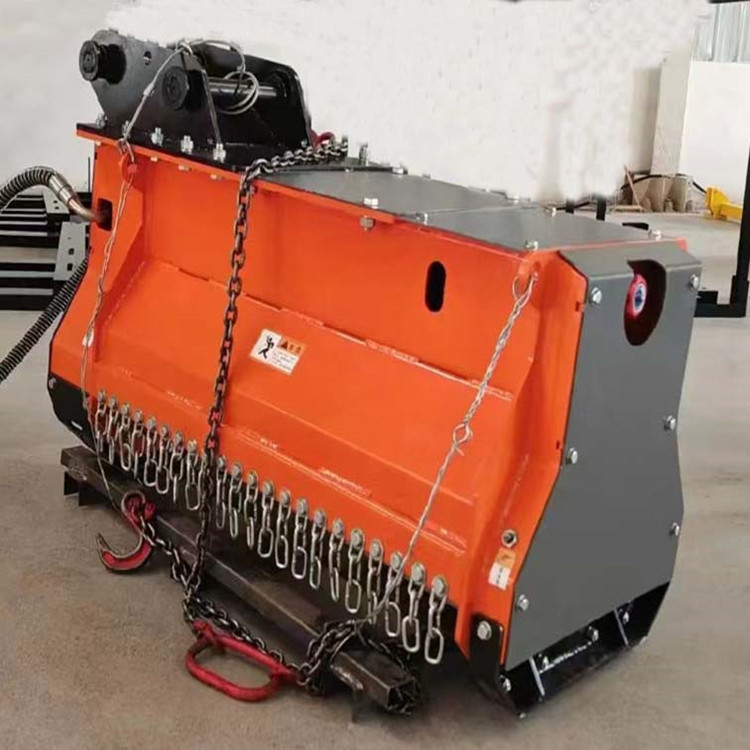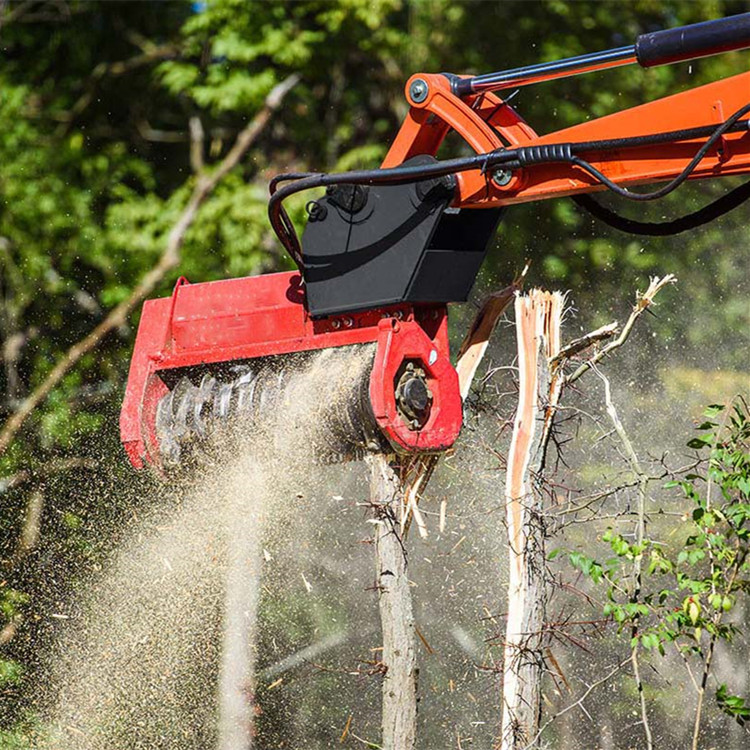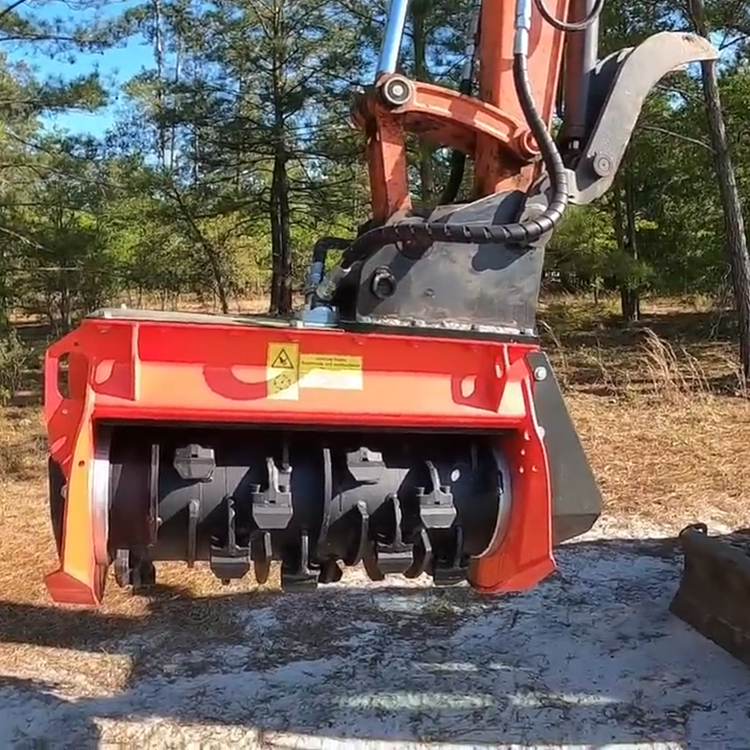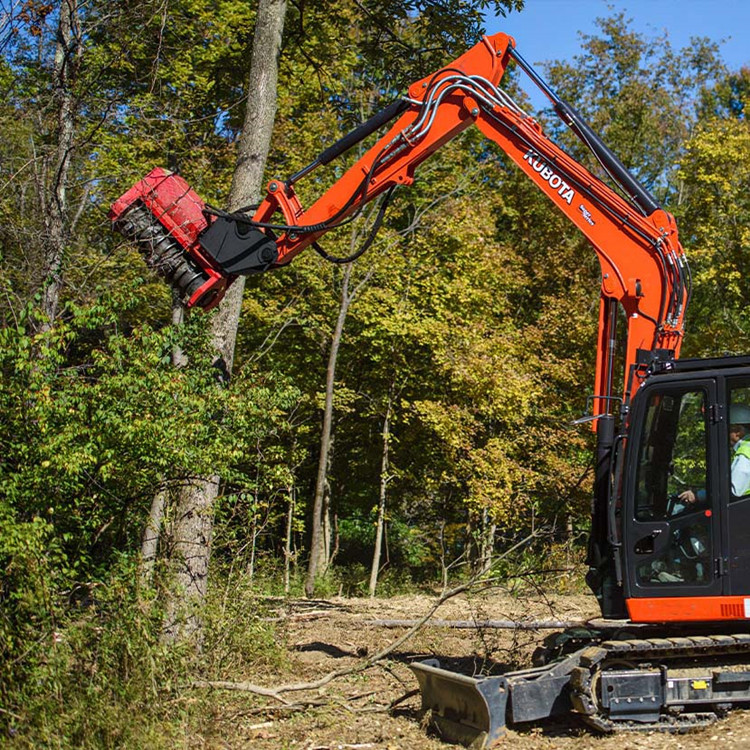Tel:
Email:
An excavator mulcher is a specialized attachment designed to be mounted on an excavator, transforming it into a powerful land-clearing machine. This attachment is typically used for forestry, land management, and construction projects where there is a need to clear vegetation, brush, small trees, and other organic material.

Forestry Management: Clearing underbrush and small trees to promote healthy forest growth and reduce fire hazards.
Land Clearing: Preparing land for construction, agriculture, or other development projects.
Right-of-Way Maintenance: Keeping utility lines, roadsides, and other right-of-ways clear of overgrown vegetation.
Environmental Management: Controlling invasive species and maintaining natural habitats.

The size of the excavator needed to run a mulcher depends on several factors, including the type of mulching work you plan to do, the size and density of the vegetation, and the specific mulcher attachment you intend to use. Here are some general guidelines to help you determine the appropriate size:

Mini Excavators (1-6 tons)
Applications: Light-duty mulching tasks such as clearing small brush, undergrowth, and light vegetation.
Mulcher Size: Typically, these machines can handle smaller mulcher attachments with cutting widths of around 24-36 inches.
Hydraulic Flow: Mini excavators usually have lower hydraulic flow rates, so ensure the mulcher attachment is designed to operate within these limits.
Mid-Sized Excavators (6-15 tons)
Applications: Medium-duty tasks including clearing thicker brush, small trees, and more substantial vegetation.
Mulcher Size: These excavators can support larger mulcher attachments with cutting widths of 36-48 inches.
Hydraulic Flow: Mid-sized excavators generally have higher hydraulic flow rates, making them suitable for more powerful mulcher attachments.
Large Excavators (15+ tons)
Applications: Heavy-duty mulching tasks such as clearing large areas of dense vegetation, thick brush, and medium-sized trees.
Mulcher Size: Large excavators can handle the largest mulcher attachments, often with cutting widths of 48 inches or more.
Hydraulic Flow: These machines have high hydraulic flow rates, which are necessary for operating the most powerful mulcher attachments efficiently.

1. Hydraulic Flow and Pressure: The mulcher attachment will have specific hydraulic flow and pressure requirements. Ensure your excavator’s hydraulic system can meet these requirements. For example, some mulchers may require a flow rate of 20-40 gallons per minute (GPM) and a pressure of 3,000-5,000 psi.
2. Weight and Balance: The weight of the mulcher attachment can affect the balance and stability of the excavator. Make sure the excavator can safely handle the additional weight without compromising stability.
3. Attachment Compatibility: Verify that the mulcher attachment is compatible with your excavator’s mounting system. Some attachments may require specific couplers or adapters.
4. Intended Use: Consider the type of vegetation and the size of the area you need to clear. For large-scale projects with dense vegetation, a larger excavator with a more powerful mulcher attachment will be more efficient.